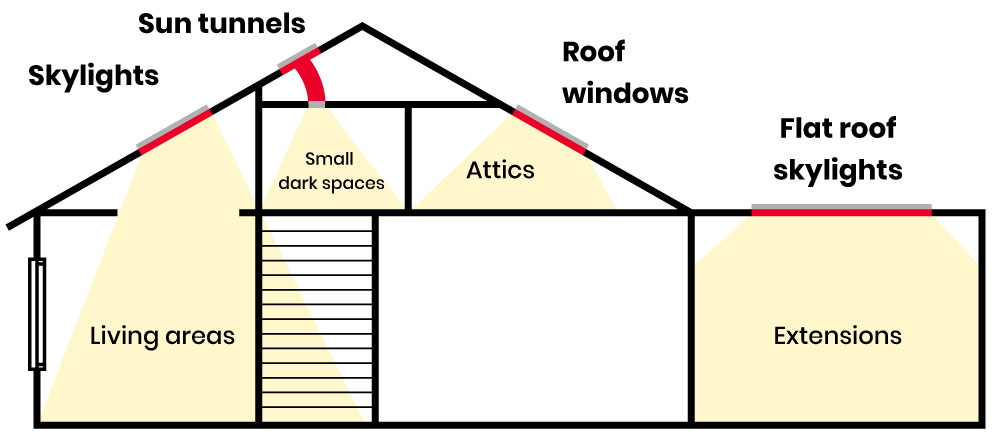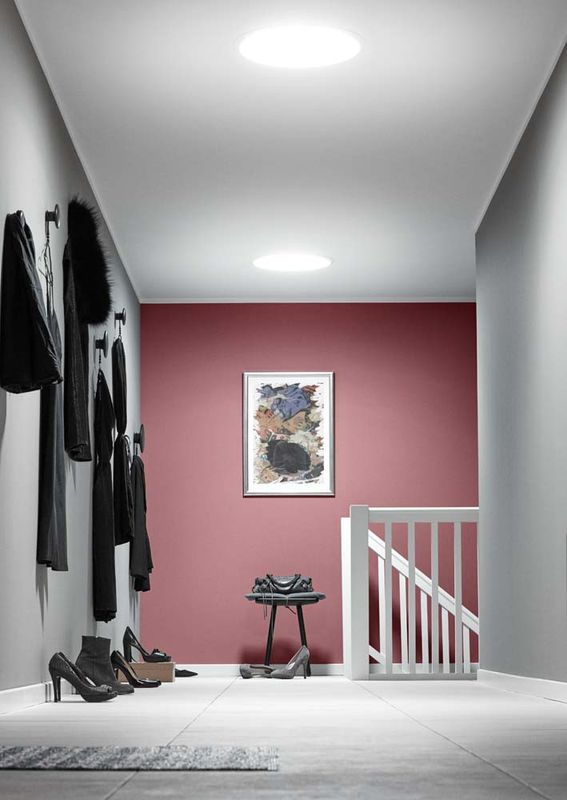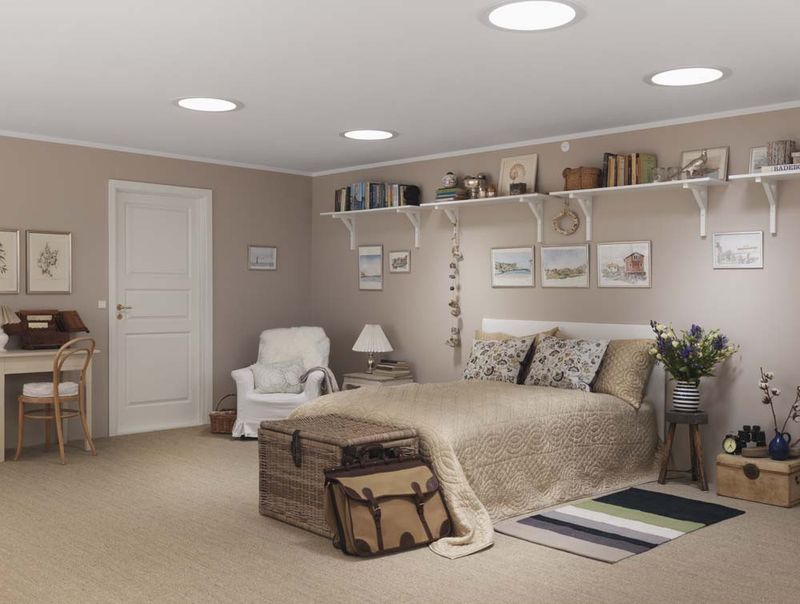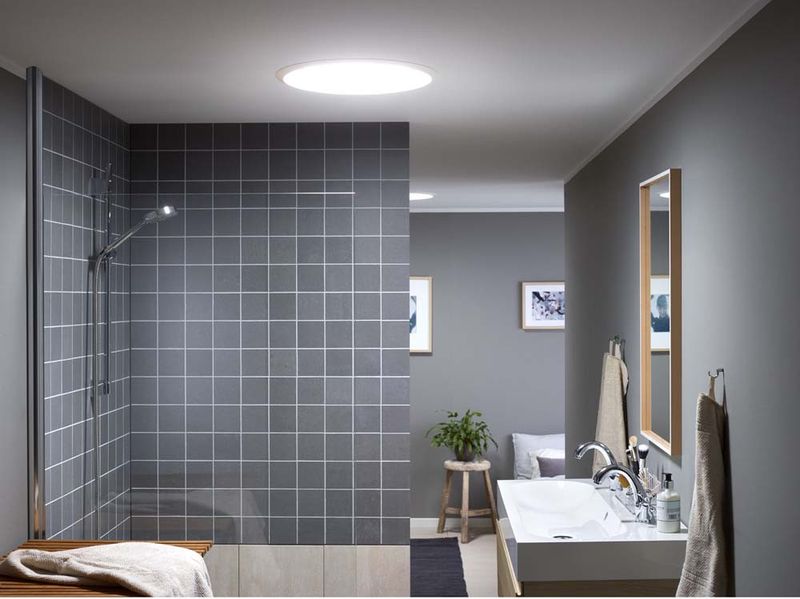Sun tunnels have many key benefits and are available in many different styles. Also known as sun tubes or skylights, they offer energy-efficient natural lighting by capturing sunlight through a dome on the roof. This light is then channelled through a reflective tube into interior spaces.
In effect, they reduce the need for artificial lighting and provide a cost-effective, environmentally friendly solution to enhance illumination in dark areas.
Interested? Read on to find out what a sun tunnel is and discover what type of sun tunnel is right for you.
Table of contents
- What is a sun tunnel?
- Which sun tunnel is right for me?
- What size sun tunnel do I need?
- How much light will a sun tunnel provide?
- What brands of sun tunnels are there?
- Why should I consider a sun tunnel?
What is a sun tunnel?
Sun tunnels are also referred to as light tunnels or light tubes. They are an inexpensive solution to bringing light into a home where rooflight space is limited. They feature a panel that sits discreetly on the outside of a roof, a highly reflective tube channelling sunlight into the room, and a diffuser that disperses light naturally.
 Sun tunnels can be installed on both flat roofs and pitched roofs, providing a good, all-around solution for dark bathrooms, loft spaces or small home offices. They are also beneficial in hallways and corridors, reducing electricity bills by introducing natural sunlight. This product can pay for itself!
Sun tunnels can be installed on both flat roofs and pitched roofs, providing a good, all-around solution for dark bathrooms, loft spaces or small home offices. They are also beneficial in hallways and corridors, reducing electricity bills by introducing natural sunlight. This product can pay for itself!
Which sun tunnel is right for me?
Because they suit such a variety of needs, there are several options when it comes to picking which sun tunnel is right for you. The first decision when buying a sun tunnel is whether to choose a flexible sun tunnel or a rigid sun tunnel. This will depend on where you’re aiming to direct light and what will it need to pass through:
Rigid sun tunnels
Rigid sun tunnels consist of one straight tube that directs light where you need it. These tunnels can’t be bent or angled but will give you the highest level of light transmission. This is because the light travels in one motion to reach its destination. Rigid sun tunnels are the most common choice for applications where the tube is installed through an empty roof space into rooms below.

Flexible sun tunnels
Flexible sun tunnels incorporate a bent or angled tube, reducing the amount of light that enters a room. However, because of the way that light bounces off the reflective insides of the tube, you can get around any obstructions that prevent you from using a rigid alternative. For example, if your loft space features aircon units or services, you can get around these with a flexible sun tunnel.
Flexible sun tunnels are best suited to shorter distances. They allow you to pick the optimum placement on the outside of the roof and to direct the tube exactly where you’d like it. Even if that positioning isn’t directly below the roof.

What size roof light tunnel do I need?
Sun tunnels come in many sizes made for either slate, tiles, or flat roof substrates. To ascertain the correct size of sun tunnel you need, it’s best to first look at where and why this is being installed. For example, will the light become a design feature? i.e., do you want to install the sun tunnels in an evenly spaced row or a symmetrical pattern? Do you simply need one sun tunnel to light a small, dark corridor?
For applications where you’re lighting a small room then it is recommended to purchase the biggest product that will fit in the ceiling space. For larger rooms, like spare bedrooms or bathrooms, we recommend one or two medium-sized tunnels as attractive features.
| Room Size | Example Room Types | Recommended Sun Tunnel Diameter |
| 0-4m2 | Hallways, larders, walk-in wardrobes, and bathroom en-suites | 10 inches |
| 4 - 10m2 | Small rooms, stairwells, and home offices | 10 inches |
| 11 - 15m2 | Bathrooms and bedrooms | 14 inches |
| 16 - 22m2 | Kitchens, living spaces and extensions | 14 inches |
How much light will a sun tunnel provide?
The amount of light a light tunnel provides is dependent on several factors. This includes whether your roof is south-facing, from which it is possible to generate the most amount of light. If your roof doesn’t face south, this isn’t a problem as sun tunnels are highly reflective and provide good levels of light all around. Another factor that will determine the amount of light is the shape and size of the room. If, for example, you opted for a smaller, 10-inch diameter light tunnel in a 20m2 room, the light dispersion will not be sufficient to light the whole area.
In the best, south-facing conditions, a rigid sun tunnel of 10 inches will provide around 150-200 watts of dispersed light compared with a 14-inch option, which will generate around 200 – 250 watts.

What brands of sun tunnels are there?
Many popular brands offer sun tunnels, also known as sun tubes. Choose between VELUX pitched roof sun tunnels and flat roof sun tunnels, FAKRO pitched roof light tunnels and FAKRO flat roof light tunnels as well as Monodraught sunpipes, Em Tube pitched roof skylights and Em Tube flat roof skylights.
Why should I consider a sun tunnel?

A sun tunnel has the ability to bring natural light into interior spaces. This reduces your reliance on artificial lighting, lowering energy costs and creating a brighter and more visually appealing home environment.
At the same time, it will also contribute to sustainability efforts by reducing your carbon footprint.
Last but certainly not least, the right sun tunnel will immediately become a stunning focal point in any room, adding a touch of elegance and sophistication.
The bottom line is:
Sun tunnels come with plenty of benefits and few, if any, drawbacks. So, it should come as no surprise that they’re becoming increasingly popular with the engaged homeowner in the UK.












